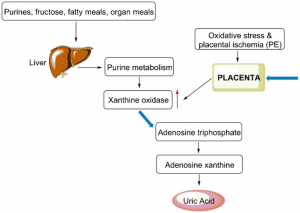Breastfeeding is a beautiful and natural process that provides numerous benefits to both babies and mothers. It is a unique bonding experience that nourishes infants and supports their healthy growth and development. In this article, we will explore the wonders of breastfeeding, discussing its benefits, techniques, and tips to help new mothers embark on this remarkable journey.
- The Benefits of Breastfeeding: Breast milk is often referred to as “liquid gold” due to its remarkable composition that caters perfectly to a baby’s nutritional needs. Here are some key benefits of breastfeeding:
a. Optimal Nutrition: Breast milk contains the ideal combination of proteins, fats, carbohydrates, vitamins, and minerals necessary for a baby’s growth and development. It is easily digested, ensuring maximum nutrient absorption.
b. Immune System Boost: Breast milk is packed with antibodies, enzymes, and white blood cells that help protect infants against a variety of illnesses, infections, and allergies. It strengthens their immune system and lowers the risk of developing chronic conditions later in life.
c. Bonding and Emotional Connection: The act of breastfeeding promotes a unique bond between mother and baby. Skin-to-skin contact, eye contact, and the release of oxytocin during breastfeeding contribute to the emotional well-being of both mother and child.
d. Long-Term Health Benefits: Breastfeeding has been linked to a reduced risk of obesity, diabetes, certain cancers, and cardiovascular diseases in children as they grow older.
- The Breastfeeding Process: a. Establishing Proper Latch: Achieving a good latch is essential for successful breastfeeding. Proper positioning, with the baby’s mouth covering the areola and not just the nipple, ensures effective milk transfer and prevents nipple soreness.
b. Milk Production and Supply: Breast milk production works on a supply and demand basis. The more frequently and effectively a baby feeds, the more milk the mother’s body produces. Ensuring a comfortable and peaceful environment can facilitate milk letdown.
c. Feeding Cues and Timing: Babies show hunger cues such as rooting, sucking on hands, or making sucking noises. Responding promptly to these cues and feeding on demand helps establish a healthy feeding routine.
d. Breast Care and Hygiene: Maintaining good breast hygiene is crucial. Mothers should wash their breasts with warm water and avoid using harsh soaps. Proper breast care can help prevent infections and ensure the comfort of both mother and baby.
- Overcoming Breastfeeding Challenges: While breastfeeding is natural, it may not always come easy. Here are some common challenges and how to address them:
a. Engorgement: Engorged breasts occur when milk supply exceeds demand, causing discomfort and difficulty in latching. Applying warm compresses, hand expressing milk, and nursing frequently can provide relief.
b. Sore Nipples: Soreness is common in the early stages of breastfeeding. Ensuring a proper latch, using lanolin cream, and allowing nipples to air dry can alleviate discomfort.
c. Low Milk Supply: Some mothers may experience challenges with milk supply. Techniques such as pumping after feedings, maintaining a healthy diet, staying hydrated, and seeking support from a lactation consultant can help increase milk production.
- The Role of Support and Education: Breastfeeding is a learned skill that can benefit from support and guidance. Joining breastfeeding support groups, consulting lactation consultants, and seeking assistance from healthcare professionals can provide valuable insights and encouragement for new mothers.
Breastfeeding is a remarkable journey that nourishes babies and strengthens the bond between mother and child. It offers a plethora of benefits, including optimal nutrition, enhanced immune function, and long-term health advantages. By understanding the breastfeeding process, overcoming challenges, and seeking support, mothers can embark on this fulfilling experience, giving their babies the gift of nature’s perfect food.
Remember, this is just a starting point for your article. Feel free to modify and expand upon the information provided to create a comprehensive and engaging piece.
Written By
Jesica Mithila






